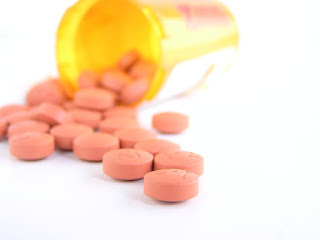Contributed by Lara Gray, Director of Education
For this week’s blog, we interviewed a few of the staff at
Drug Free Sport. We asked them to share insights from drug testing in 2016, and
potential new (or repeating) trends in 2017.
LG: What, if anything,
is changing in sport drug testing and analysis?
Staff: More and more, we are seeing professional sport
leagues test blood samples as well as urine to ensure fair play. Amateur and
institutional clients are beginning to look into oral fluid testing and other
matrices as complementary features of their current drug testing program.
 LG: Specific to the
blood testing, what’s changing?
LG: Specific to the
blood testing, what’s changing?
Staff: The World Anti-Doping Association (WADA) has
validated Human Growth Hormone (hGH) biomarker analysis to compliement isoform testing for hGH. Essentially, they’re able to test for a greater
detection window with the biomarker analysis that can show hGH up to two weeks
after administration. Comparatively, isoform testing can detect hGH only within 24 – 48 hours of administration.
LG: Is WADA validation important with new testing
methods?
Staff: Of course. Many sport leagues look to the WADA Code and Prohibited Substances List
as a gold standard. However, full implementation of WADA protocols can be difficult
for clients that must also negotiate terms with their players unions through
Collective Bargaining Agreements.
LG: What are sport
organizations doing to work with the players unions and still provide effective
drug testing programming?
Staff: “Smart” testing is becoming a new trend where we are
seeing a shift to testing methodologies that efficiently and effectively use
appropriate funds for deterrence testing. We are seeing this across the board
for professional, amateur, and collegiate/institutional clients. Essentially,
everyone is learning how to make the most of their drug-testing dollars and
amplify the impact on deterrence.
LG: Are there any
changes being made to the substances tested for in sport?

Staff: Nothing is changing dramatically in terms of the
substances screened, even with marijuana which gets a lot of attention. We
don’t anticipate any significant changes in marijuana testing as a result of
the legislation efforts in several states across the country. Until there is a
change from the Federal government, there likely won’t be a change in marijuana
as a banned substance in sport. What has changed, however, is the conversation
around marijuana—again, because of legalization in certain states.
LG: Can you
elaborate? What has changed in the conversation?
Staff: There is a discussion targeting the social
acceptability of marijuana—especially in the states where it is now legal for
recreational use. We are providing more education on the different forms of
marijuana use like edibles and concentrates, or that athletes may be using
e-cigarettes or vape pens to mask their use on campus or within the sports
facility. The potency of marijuana has changed dramatically over the last few
years, which may be leading to higher dosages, longer lasting effects in the
body, even addiction. For institutional collegiate clients, marijuana remains
the largest concern on campuses.
 LG: Are there other substances
of concern looking ahead into 2017?
LG: Are there other substances
of concern looking ahead into 2017?
Staff: It’s hard to say what will be new in 2017, but there
is growing concern over growth hormone releasing peptides (GHRPs) in
professional sports, and the reemergence of anabolic steroids that were popular
in the Eighties. SARMs, such as ostarine and LGD-4033, are also a concern as
they are appearing in more supplement items and marketed as “legal”, which is absolutely
false. Collegiately, there have been increasing requests for testing panels to
include prescription narcotics and opiates. Prescription stimulants being used
and abused without a prescription are also concerns on college campuses—we’ve
even heard stories specific to athletes snorting amphetamines like Adderall.
LG: Sounds like
there’s a lot going on! Are there any other trends you feel are important to
share?
Staff: Probably the technology that surrounds drug-testing
and third party administration of programs. For example, there are a number of
researchers working on new technology that can detect certain drugs at lower
specific gravity (or urine concentrations). Labs are also making strides to
update machines that are “greener” in terms of efficiency. This helps decrease
the turnaround time for receiving results which positively benefits the
clients. We also know that there is a lot of work going into delivering
appropriate protocols for testing transgender athletes. In January, we distributed our "Collection Procedures and Guidelines for Transgender Student-Athletes" to all of our collectors nationwide.
LG: Lastly, what
impact (if any) do you feel the 2016 Russia doping issue has had on drug
testing efforts in the US, or for Drug Free Sport specifically?
Staff: The impact is really just the importance of having
independent administrators for drug-testing programs. A complete third-party
that conducts athlete selection, administration of the program, conducts
testing and works with WADA accredited labs, and provides accurate reports to
the sport organization is critical. Their involvement must be completely
separate and independently run. The Russia issues also increased the importance
of consistency in communicating confidentiality and the code of ethics for drug
testing to all of our certified collectors. Cyber security also becomes a
larger concern in the wake of 2016.
LG: I think all of
this is important to share and continue to discuss as we get further into 2017.
Thanks for your time and insights!
For more information on any of the issues or topics
discussed here, please email Lara Gray at
lgray@drugfreesport.com.
Special thanks to the following staff members for their time
and responses that made this blog possible: Ryan Willis, Sarah Ziegelmann,
Allison Lathim, Ben Mosier, and Michaela Stemmons.





